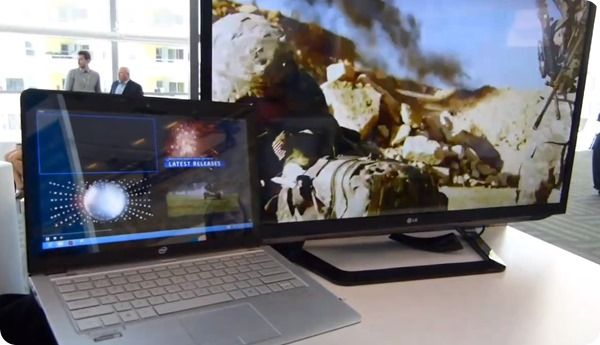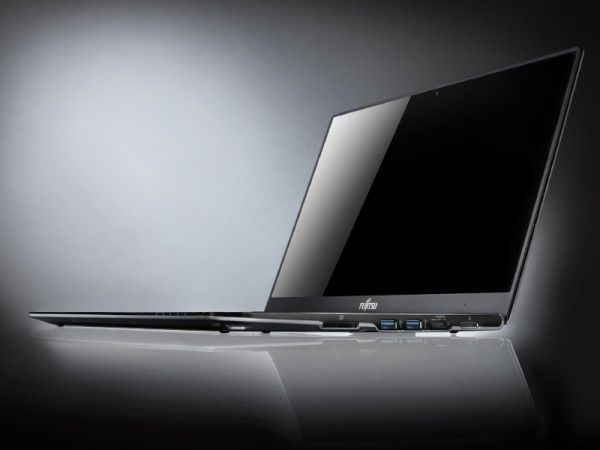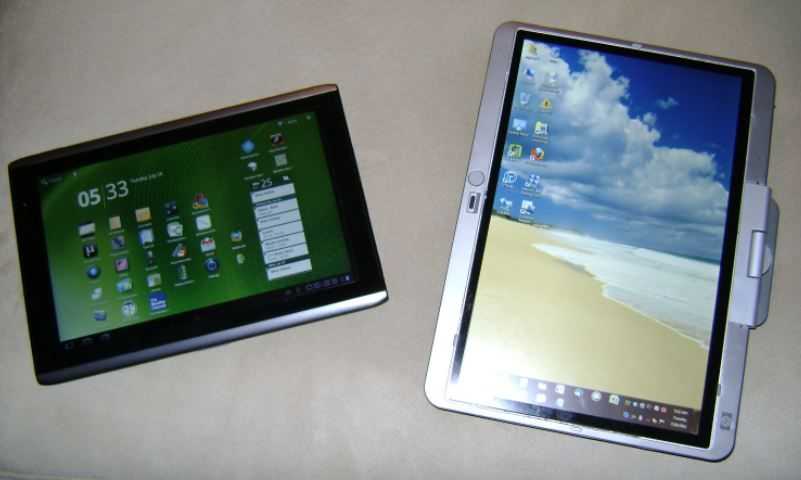Intel’s Wireless Display (WiDi) offering has been through a number of improvements over the last few years and the current V3 offers some interesting low-latency, USB-return-path and protected content features. In a new WiDi Pro version though, outed by Rick Echevarria, vice president of Intel’s Architecture Group in an interview with ITPro, you’ll see screen to screen collaboration.
Tag Archive | "enterprise"

Fujitsu Lifebook UH572 and U772 Ivy Bridge Ultrabooks, Full Specs, Pricing, Availability
Posted on 06 June 2012

HP Launching Enterprise-focused EliteBook Folio 9470m Ultrabook w/ Docking Connector Integrated 4G, and More — Full Specs
Posted on 12 May 2012
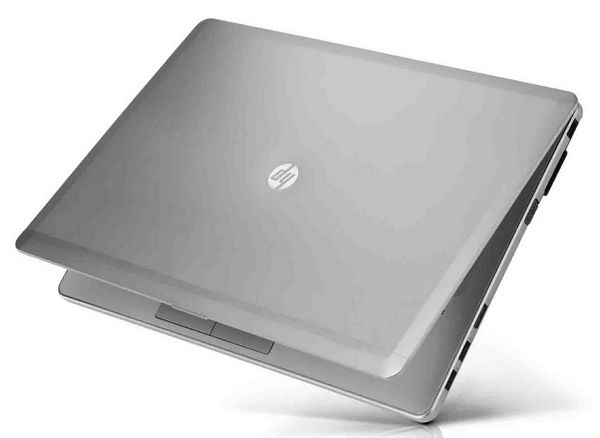 HP is refreshing it’s first entry into the Ultrabook space, the Folio 13, with the business oriented EliteBook Folio 9470m. This is a business focused machine which HP has brought up to speed with a third-generation Ivy Bridge processor a larger screen, a removable battery, docking connector, secondary-battery port, and more.
HP is refreshing it’s first entry into the Ultrabook space, the Folio 13, with the business oriented EliteBook Folio 9470m. This is a business focused machine which HP has brought up to speed with a third-generation Ivy Bridge processor a larger screen, a removable battery, docking connector, secondary-battery port, and more.
Acer Iconia A500 Enterprise Test Pt. 2 The Business War So Far (and other strange things)
Posted on 29 July 2011
It has been 3 working days since I started my self-initiated challenge to have my Iconia A500 replace my HP 2730p at work. It took the first day to get it set up and configured, and a second day that I was out sick to really solidify how I was going to run the Acer for the foreseeable future. In that time, I have downloaded and applied the step up to Android 3.1 (the Iconia came stock with 3.0). I have also tested several functions of the various ports. I thought it would be a good time to give a brief synopsis of the story so far. Please note that some of the Carrypad crew have performed these tests in the past, so this is a refresher and a specific update as to how it all appears to be working under Android 3.1. Some of the notes will also reflect my specific perspective from attempting to use the A500 in the enterprise space.
Configuration and Apps: A few notes on my current configurations and why they are what they are for using a tab in the workplace
Homescreens and Calendar: I run fewer apps on the Iconia than I normally do on an Android device. While I use only one homescreen on my iPad, with all apps sorted into folders, and run almost all Widgets on Android homescreens, I have gone back to the function-specific homescreen paradigm on the Iconia. My main page has all of my productivity apps, the Advanced Task Killer widget, and my Calendar widget, which I have sized to its maximum size. I originally thought I would not use the “Iconia Tab” default account that comes already set up in calendar. But because I want to limit the amount of cloud syncing that occurs on this device, I have used this account to enter my daily work meetings. I then keep the calendar view suppressed to only the Iconia Tab account during the work-day, so I am not distracted by future Google appointments from my main account that is also synced with the device.
I keep one homepage for nothing but stickies and Whiteboard Pro tiles. The left-most homescreen has buttons for my weather apps and the Browser widget. These are so I can check weather before my commute home or on travel, and to quickly check tech news over my lunch break. The right-hand homescreen has any media apps that I use to assist me at work: Camera (for taking snaps of whiteboard exercises), Gallery (for viewing those snaps), Music (to work to), Recorder and Voice Recorder (for taking voice memos for myself). This screen also has MailDroid and GMail for checking personal mail over lunch.
The right-most homescreen has all of my admin utilities. ES File Explorer, the Android Market, JuicePlotter, Battery Dr, and Settings shortcuts for Bluetooth, Display Settings, Sound, and Wi-Fi.
I primarily run this device disconnected at work. I boot my hotspot upon arrival, again over lunch, and maybe right before leaving in the evening for a quick connection, minimal sync, and personal email check. Other than that, I keep Wi-Fi off.
Physical Set-Up in the Office: I use a CaseCrown Wood Tablet Stand on my desk to place the Iconia in the corner where my two desks join at a right- angle. While I plan on rotating keyboards and mice, this week I have been using my Microsoft Bluetooth Keyboard 6000 and a generic USB laptop mouse, plugged in to a CP Technologies 4-port USB 2.0 Hub. I have been using the Targus Capacitive stylus along with it.
Port Testing and Peripherals: While not all of this has an impact on my use of the Iconia A500 at work, I wanted to note the results of various hook ups I have attempted during initial setup.
- USB Hubs: every USB 2.0 hub I have tried so far has worked. I have tried USB keyboards, mice, and thumb drives plugged into these hubs and have successfully connected and utilized each. The largest thumb drive that I tested was a PNY 32GB thumb drive. The one USB 1.1 hub that I tried did not work at all, leading me to believe that the Iconia’s full-sized USB port is only compatible with USB 2.0 hubs
- Keyboards and mice: I have tried several USB keyboards and mice with the Iconia and each one has worked. I have used a TabletKiosk Foldable Keyboard (pictured below), and an i-Rocks keyboard successfully. I have used several mice, including a Logitech G5 and they have all worked. I only tried using the left and right mouse keys, and have not tried the scroll-wheel button or the forward and back buttons. The scroll wheel itself does work in most apps to scroll through the page.
- Thumb Drives: another round of completely successful tries. I have tried the aforementioned PNY 32GB drive, as well as two 4GB drives
- MicroSD Cards: All successful. I used a 4GB and a 16GB card. Both cards were wiped and formatted to FAT32 file systems. With both of these, as well as the thumb drives, I was able to use ES File Explorer to access the contents. I was able to access Word, Excel, .PDF, and image files. It is not intuitive for a normal user as to how you get there (click the SD Card button, select the folder titled “mnt” and select the extsdcard folder), but any average tech-head will figure it out in a couple of tries
Surprise Findings:
- I plugged my HP HDMI-to-VGA adapter that I use with my HP Voodo Envy 14 (yes, I still insist on calling it a Voodoo) into the mini-HDMI to male-HDMI adapater that I received today from Amazon. Amazingly, it actually worked. This means being able to use the Iconia, and likely any Honeycomb Tablet that has HDMI out, with VGA monitors if, say, that is all your job provides. I plan on trying this hookup out with the Motorola Xoom 3G to see if I get the same results. I also have a straight mini-HDMI to full-HDMI cable that I need to try out with my 23″ Acer monitor later this week. Pics of the hook-up are below (not great pics; apparently my Samsung Nexus S 4G does not do so well in low light). If you replicate this hook up, you will need to use headphones or speakers plugged into the headphone jack for sound, as audio-over-HDMI will not work through the adapter. I do not expect that I will run with this configuration very frequently. The combination of the HP adapter + VGA cable is heavier than the tablet itself, and I did not like the strain I saw being placed on the mini-HDMI-to-male-HDMI connector. My VGA cable at work is much lighter though, so using this setup there might be less of an issue.
- I plugged in a Logitech Dual Action gamepad into the USB port and it allowed me to swipe back and forth between homescreens using the D-Pad and analog sticks. At one point I was able to highlight the app icons and cycle through rows and columns using the D-Pad but I have not for the life of me been able to figure out how to do it again
The Acer Iconia Tab A500 for Business Use Only
Posted on 26 July 2011
Over the last 2 years, I have gone to work almost every day with my HP EliteBook 2730p Tablet PC. It has been a stalwart and constant companion. It has weathered many a day with me at work, both in the office and on travel, both good days and the bad. But at the two year mark, pretty much any device in my den is at risk of being retired, and so, despite my sentimental attachments to it, that time has come for the HP.
Things are different around casa GearWERKZ these days however. I am no longer single. The dog eats through pillows, furniture, and cash faster than I had expected. And a little Jerry or Jerrina (???) is on the way. And I live in a 65 year old house — she’s solid, but she needs work. With all of those dynamics in play, it was a tough sell to put together $1500 for a new Tablet PC , especially when I am no longer the sole signatory on authorizing fiduciary outlays (read: the wife wasn’t going for it).
Besides, I really did not want to just step up to an HP EliteBook 2740p. While the specs on that model are still good, it has been on the market for over a year. And I am a conspicuous consumer. I do care that my gear is near to being the latest and greatest. I was also tired of lugging the HP around to meetings. With the extended battery attached, it was heavier than I liked. The magnetic hasp was starting to become unreliable. Most importantly, the applications I used in Windows were starting to bog down. I love Microsoft OneNote and I am ok with Outlook as an email client. But once you get a notebook full of digital ink, drawings, UML diagrams, and thought bubbles, OneNote gets heavy and can become sluggish. There are extreme moments of fear when the application fades and appends the “Not Responding” tag to the application ribbon. Outlook suffers from the same behavior once .PST files become large.
So, strapped for cash, and fearful that another Windows Tablet PC would become sluggish after several months of use, I decided to take a chance. I was intent on having a slate for easier carriage to meetings, anyway, and there are few affordable ones on the market. I did take some time to look at the Acer Iconia Tab W500, the Fujitsu Q550, and the Motion Computing CL900. As you can see from the links, other members of the tablet community have found these devices lacking for general purpose use. Also add that the CL900 and Q550, the devices I would have preferred in order to get into an active digitizer, are priced on the edge of my desired price range. So, I surveyed the landscape for the tablets on the market and made a decision. As usual, I agonized over it for days, coming up with and assigning values to the variables and use-cases that I developed that I wanted to bound the purchase.
First off, I wanted a new tablet because I did not want to take the time to cull one of my current ones down to just business apps with no games or media content. Plus I wanted to continue using those devices for my own desires, not re-purpose one for work. I considered going with an iPad 2. That scenario would have likely meant using the iPad 2 at home, and re-purposing my current 1st generation iPad for work. I like the productivity apps that I use for iOS. I find Pages and Numbers are better Microsoft Office replicas than Documents-to-Go for Android. One major thing that I needed, though, was the ability to quickly transfer documents to flash-media and pop it into the tablet and go to a meeting. While it is due to change soon, the iPad is still a device that centers around being coupled to a PC or Mac as a parent device. Not a good fit.
That variable pushed me towards looking at the crop of Android tablets that have recently hit the market carrying full-sized ports. I wanted to be able to attach thumb drives, a keyboard and mouse to whatever I chose so a full-sized USB port was a plus. I considered the Acer Eee Pad Transformer, the Toshiba Thrive, and my eventual pick, the Acer Iconia Tab A500.
I was somewhat pushed in this direction by availability and time. My wife is out teaching summer camp this week, so I wanted a device quickly that I could spend the full week working with. My work-provided laptop’s hard drive died last Friday, so I wanted a personal device quickly that I could start using to decouple myself from my work IT architecture and be able to work independently. I used to do this with the EliteBook, but it has bogged down so much in the last six months that I was working on it less and less. Staples has a good deal going now with an online coupon that gives customers $100 off an all tablets except the HP TouchPad (until July 31st). Unfortunately, neither my local Staples nor the one in my company’s city carries the Eee Pad Transformer or the Thrive. I am pinched on time this week while I am filling in for my boss, so a mid-day excursion to Best Buy, which does not open until 10AM, was not feasible.
The Wal-Mart down the street, however, is open 24 hours a day and I had seen Iconia’s on the shelf on Sunday. While it lacks the hardware keyboard of the Transformer, and the full-sized SD card slot of the Thrive, I was comfortable with the choice. I was also concerned about how much attention the tablet might attract. I do not mind using my gadgets at work, but I do not like them being a distraction in board meetings, especially when I am not the senior person at the meeting. The subdued silver tone of the Iconia matches the laptops we are currently issuing, and so I am hoping it will fly underneath the radar.
I have only used it one day and then only within the confines of my own office. Primary apps in play right now are Documents-to-Go, Thinking Space Pro, and Whiteboard Pro. If you use mind-maps and thought bubbles to model use-cases, decision forks, activity and sequence diagrams, I would highly recommend checking out Thinking Space (free version). Much like OneNote, it helps me think through problems in an objective manner.
I also expect to get a lot of mileage out of Project Scheduler and Task List. I still have some hunting to do for other productivity apps and enterprise focused software. I keep crusading that tablets are first and foremost productivity devices for me while media consumption is secondary. Yet, a lot of the focus in forum threads and other media outlets continues to be insistence that tablets are only good for consumption. I have challenged this concept before, but deploying the Iconia Tab to my work space will be the furthest extent to which I have pushed this concept.
I will be penning periodic reports on Carrypad as to how this whole experiment goes. I acknowledge the fact that it might fail. I tried this a few years ago with a Samsung Q1b and failed miserably. When I upgraded to a Q1 Ultra Premium, I was too gun-shy from the last experience to give it another go. This time around, product availability and a lack of funds has made necessity the mother of invention. I also figured that if it doesn’t work out, I will certainly use the Iconia for my own personal projects. But let’s hope it does indeed work out. If nothing else, at least the reports might be a good source of a real-world documentation of deploying an Android Tablet to the enterprise space, which we hope will of use to our readership.
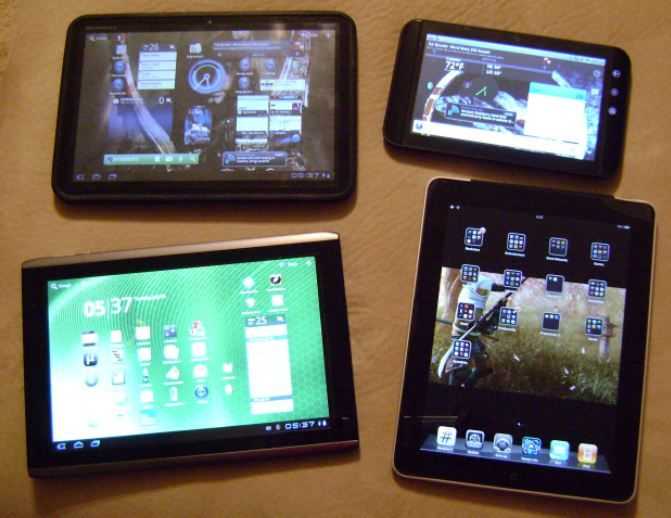
 |
| |||
 |
| |||
 |
| |||
 |
| |||
 |
| |||
 |
| |||
 |
| |||
 |
| |||
 |
| |||
 |
|

